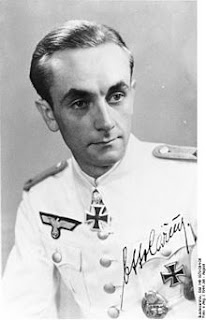One of my Favourite Tanks to Build is the Famous Tiger Tank
here I have built Otto Carius Tiger Tank 127
The Tiger tank was possibly the most famous tank of World War 2 The German Tiger Tank was introduced in August 1942 and was at that time the most powerful tank in the world. The success of the Tiger was so profound, that no allied tank dared to engage it in open combat. This psychological fear soon became to be known as "Tigerphobia".
Oberleutnant Otto Carius (born 27 May 1922)
was a German Wehrmacht German Army (1935–1945) tank commander during World War II and is credited with destroying more than 150 tanks. He is also a recipient of the Knight's Cross of the Iron Cross with Oak Leaves (German: Ritterkreuz des Eisernen Kreuzes mit Eichenlaub). The Knight's Cross of the Iron Cross and its higher grade Oak Leaves were awarded to recognise extreme battlefield bravery or successful military leadership.
His unit was integrated into the newly formed 21st Panzer Regiment and in June 1941 was sent to East Prussia. He experienced his first battle as a loader in a Panzer 38(t) during Operation Barbarossa in late June 1941. It was during this operation that Carius suffered wounds from a round that struck his tank.
In 1943, Carius transferred to the schwere Panzer-Abteilung 502 (502 heavy tank battalion). This unit fought at the Leningrad front and then in the area of Narva, Estonia (Battle of Narva). Carius was severely wounded on July 24 1944 while reconnoitering a village on a motorcycle ahead of his tanks. Until that day, he was unofficially running the 2nd company of 502nd; however, he officially became the commander of 2nd company on the same day he was shot through the leg, arm, 4 bullets in the back and one through the neck. He subsequently became the commander of a Jagdtiger company of the 512th Heavy Antitank Battalion (schwere Panzerjägerabteilung) in the West at the beginning of 1945. On 8 March 1945, without finishing its training, 2nd company was directed to the front line near Siegburg. It then took part in the defense of the River Rhine and eventually surrendered to the US Army on 15 April 1945.
WWII began with a metallic roar as the German Blitzkrieg raced across Europe, spearheaded by the most dreaded weapon of the 20th century: the Panzer. No German tank better represents that thundering power than the infamous Tiger, and Otto Carius was one of the most successful commanders to ever take a Tiger into battle, destroying well over 150 enemy tanks during his incredible career.
.



The roar as the German Blitzkrieg raced across Europe, spearheaded by the most dreaded weapon of the 20th century: the Panzer.
While the Tiger I was feared by many of its opponents, it was over-engineered, used expensive and labour intensive materials and production methods, and was time-consuming to produce. Only 1,347 were built between August 1942 and August 1944. The Tiger was prone to certain types of track failures and immobilizations, and limited in range by its huge fuel consumption. It was, however, generally mechanically reliable but expensive to maintain. It was also complicated to transport, and vulnerable to immobilization when mud, ice and snow froze between its overlapping and interleaved road wheels in winter weather conditions, often jamming them solid. In 1944, production was phased out in favour of the Tiger II.
This is my Version of the model Kit
Tamiya no 202 1/35 Scale
OTTO CARIUS " 127 " Tiger Tank













































Nessun commento:
Posta un commento